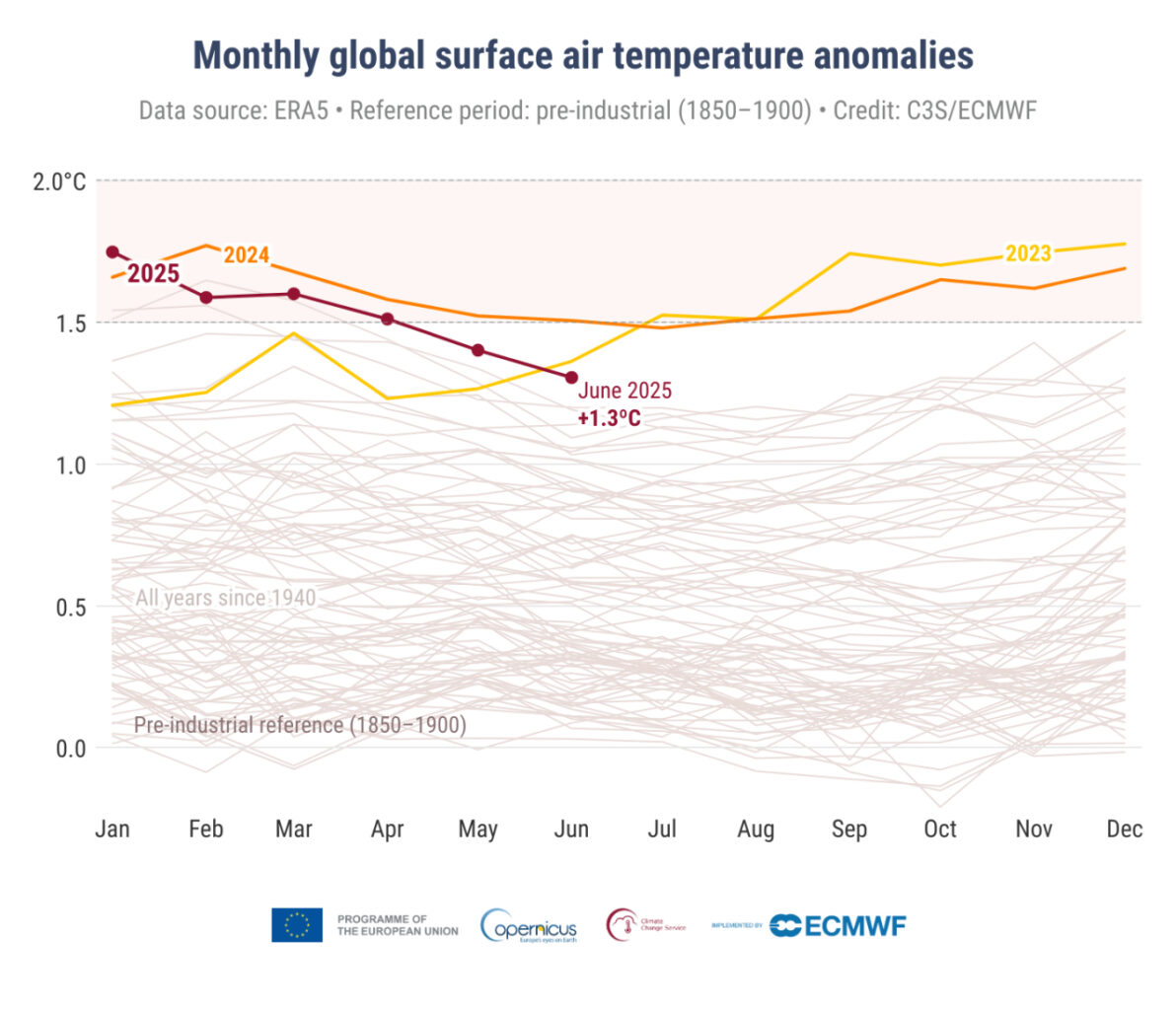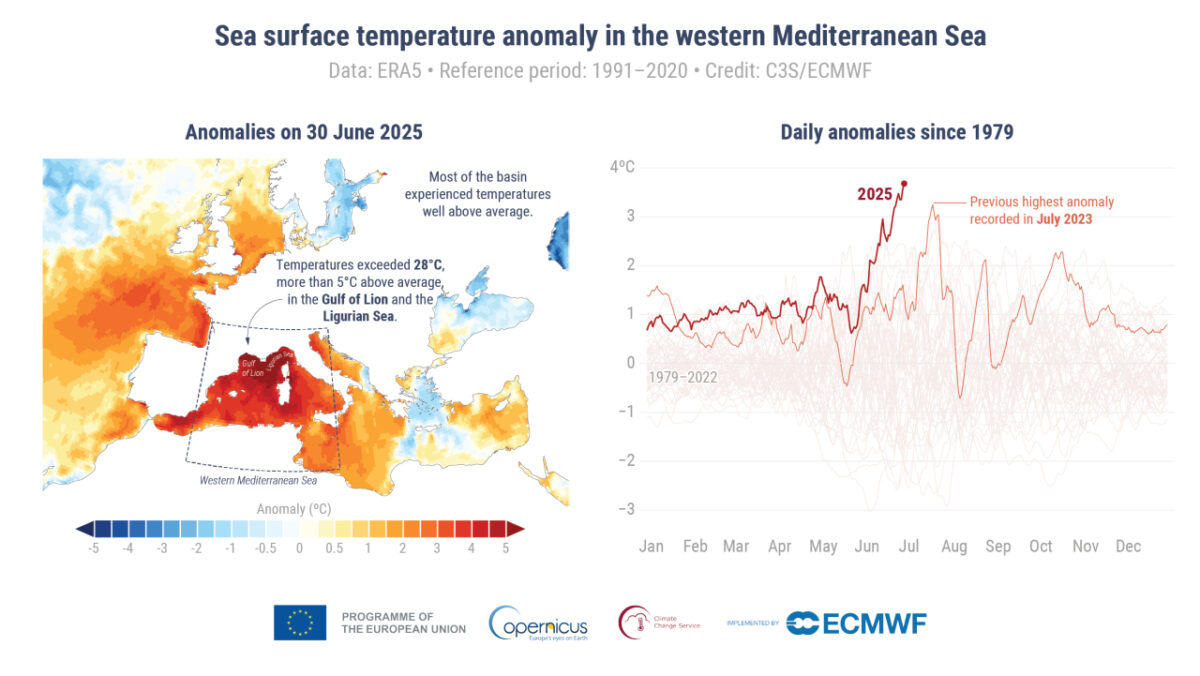
Third-warmest June on record

The month of June 2025 was the third-warmest globally since records began, according to the latest bulletin from the Copernicus Climate Change Service (C3S).
The findings, based on extensive satellite and surface data, paint a picture of escalating climate extremes—with heatwaves battering Europe, marine heatwaves boiling the Mediterranean, and sea ice shrinking near both poles.
Globally, the average surface air temperature in June was 16.46°C—0.47°C above the 1991–2020 baseline and 1.3°C warmer than the pre-industrial average. Although cooler than the record-breaking Junes of 2023 and 2024, it remains yet another signpost in a warming world.
“June 2025 saw an exceptional heatwave impact large parts of western Europe, with much of the region experiencing very strong heat stress,” said Samantha Burgess, Strategic Lead for Climate at ECMWF. “In a warming world, heatwaves are likely to become more frequent, more intense and impact more people across Europe.”

Europe Scorched by Record-Breaking Heatwaves
Western Europe sweltered under two powerful heatwaves in mid- and late June, pushing feels-like temperatures beyond 38°C in many locations. Parts of Portugal recorded a staggering 48°C in apparent temperature—levels associated with ‘extreme heat stress.’
Western Europe experienced its warmest June on record, with an average temperature of 20.49°C—surpassing the previous high from 2003. Across the continent, the average temperature was 18.46°C, ranking as the fifth-warmest June on record for Europe.
Ireland largely avoided the worst of the heat, but June was wetter than average across much of the island, particularly in the north and west. This stood in contrast to drier-than-usual conditions across southern and western Europe, the UK, and parts of Scandinavia.
Marine Heatwaves and Record Sea Surface Temperatures
The world’s oceans continued to store and release excess heat at alarming rates. The global average sea surface temperature for June was 20.72°C—third highest for the month on record.
A severe marine heatwave gripped the western Mediterranean, where the highest daily sea surface temperature ever recorded for June—27.0°C—was logged. This also marked the highest daily temperature anomaly ever recorded in the region, with SSTs running 3.7°C above average.

Sea Ice Continues to Decline
In the Arctic, sea ice extent was 6% below average for June, making it the second lowest on record. By late June, daily sea ice extent in the Arctic hit its lowest ever level for the time of year.
The Antarctic also saw significant losses, with sea ice extent 9% below average—ranking as the third-lowest June on record. Particularly low concentrations were noted in the Bellingshausen Sea and South Atlantic sectors.
Global Weather in Extremes
While parts of Europe and North America baked, southern South America experienced record cold—a stark reminder of how climate change drives variability as well as warming. Parts of Argentina and Chile recorded unusually cold conditions, while India and East Antarctica also ran cooler than average.
Hydrological extremes mirrored the thermal ones: many areas from Canada to eastern Africa, and from Japan to southern South America, saw drier-than-average conditions, exacerbating drought risks. Meanwhile, Ireland, Iceland, and parts of Scandinavia were wetter than average.
Share this WeathÉire story:





















